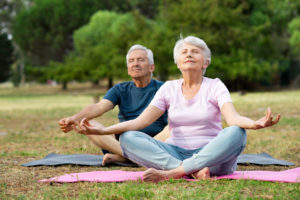In the current climate of #stayhome you can still enjoy your back garden and start taking advantage of your green spaces — and it is good for you. Better physical and mental health can be as easy as putting your feet in grass. And, there is a name for it – it’s called grounding.
The idea behind grounding, which is also called earthing, is that humans evolved in direct contact with the Earth’s subtle electric charge. However, over the centuries we have lost that sustained connection due to advancements such as buildings, furniture, and shoes with soles.
Proponents of grounding say this disconnect might be contributing to the chronic diseases that are particularly prevalent in modern day societies. There is some science behind this. Research has shown barefoot contact with the earth can produce almost instant changes in a variety of physiological ways including improved sleeping, pain reduction, decrease of muscle tension and lower stress levels.
Grounding and earthing are electrical terms. But you don’t need the sparky to get your healthy dose of grounding. Harken back to school science class and you may remember that everything, including humans, is made up of atoms. These microscopic particles contain equal numbers of negatively charged electrons, which come in pairs, and positively charged protons, so an atom is neutral — unless it loses an electron.
When an atom has an unpaired electron, it becomes a “free radical” with a positive charge, capable of damaging our cells and contributing to chronic inflammation, cancer and other diseases. In this case, “positive” is not a good thing.

One reason grounding yourself may have beneficial physiological effects is that the earth’s surface has a negative charge and is constantly generating electrons that could neutralise free radicals, acting as antioxidants. These days the term antioxidants are used with “super” food diet rich in fruits, vegetables and other foods that provide beta-carotene, selenium, lutein, lycopene and vitamins A, C and E that help prevent cellular damage from free radicals. However, in this case we are getting them directly from the earth.
Research also suggests physical contact with the Earth’s surface can help regulate our autonomic nervous system and keep our circadian rhythms — which regulate body temperature, hormone secretion, digestion and blood pressure, among other things — synchronised with the day-night cycle. When our internal clocks get messed up on a regular basis there can be health problems, as evidenced by research on shift workers.
Still, since being outdoors is proved to be good for you, it probably would not hurt to try it yourself to see if you notice any benefits. So how do you ground? Simply allow your skin to be in contact with any natural conductors of the earth’s electricity, working up to at least 30 minutes at a time. You can walk barefoot on grass, moist soil, sand, gravel or concrete or you can sit under a tree, leaning against the trunk.
While you’re at it take in the Vitamin D of the sun. According to the Cancer Council, the best source of Vitamin D is UVB radiation from the sun. For most people, adequate Vitamin D levels are reached through regular incidental exposure to the sun. When the UV Index is 3 or above (such as during summer), most people maintain adequate Vitamin D levels just by spending a few minutes outdoors on most days of the week.
If you are interested, you can learn more on the Earthing Institute website. https://earthinginstitute.net/
In the meantime, remember, #stayhome doesn’t mean you can’t go outside. Make sure you take time to get to take full advantage of your back garden and put your bare feet in the grass.
(Source: https://earthinginstitute.net/research/ and Washington Post articles)

